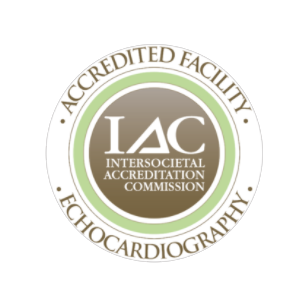Atrial fibrillation, known as AFib or AF, is a condition that causes the upper chambers of the heart to beat irregularly and extremely fast (about 500–600 beats per minute). The most common irregular heartbeat, it affects more than 5 million adults in the U.S. A normally functioning heart beats 60 to 100 times per minute — 86,440 to 144,000 beats per day!
By Annette Pinder
Atrial fibrillation, known as AFib or AF, is a condition that causes the upper chambers of the heart to beat irregularly and extremely fast (about 500–600 beats per minute). The most common irregular heartbeat, it affects more than 5 million adults in the U.S. A normally functioning heart beats 60 to 100 times per minute — 86,440 to 144,000 beats per day!
Vijay Iyer, MD, PhD of Great Lakes Cardiovascular, explains, “When the heart works properly, it pumps blood to the body with a normal heart rhythm. The heart’s two upper chambers (atria) contract, followed by the two lower chambers (ventricles). When timed perfectly, the heartbeats pump blood efficiently. The electrical impulse guiding the heart’s pumping action, located in the sinoatrial (SA) node in the right atrium, causes the left and right atria to contract, forcing blood into the ventricles. The electrical impulse travels into the atrioventricular node (AN) near the middle of the heart. With AF, the SA node doesn’t direct the electrical rhythm, and many other impulses may fire at once, causing the atria to beat irregularly and quiver, or beat chaotically and not in coordination with the ventricles.”
“When heart rate in a person with AF is well-controlled, it is not life threatening, but AF can cause shortness of breath, light-headedness, and an increased risk of heart-related complications. It can also cause blood clots due to stagnant blood in the heart’s left upper chamber in a pouch called the left atrial appendage. If a clot breaks off, enters the bloodstream, and lodges in an artery leading to the brain, it results in stroke. About 15 to 20 percent of people who suffer from strokes have AF, which is why many people with AF are placed on blood thinners,” says Dr. Iyer.
Some patients with AF can be cured with a procedure called ablation. Ablation involves small burns or freezes that cause scarring on the inside of the heart to break up electrical signals that cause irregular heartbeats. However, Dr. Iyer is excited about a non-thermal treatment called pulsed field ablation (PFA), that will soon be available. The Heart Rhythm Society (HRS) notes that PFA has been shown to successfully eliminate AF in 70-75 percent of patients with one procedure. When repeated in patients who still have AF after the first procedure, PFA’s success rate is 85-90 percent. Researchers are excited about the efficacy, speed, and safety of PFA, especially since HRS predicts that 16 million Americans will have AF by 2050.
Dr. Iyer notes that alternatives to blood thinners are also available to people who suffer from AF, as well as opportunities to participate in new clinical trials that use medications and devices, such as the Watchman procedure and Amplatzer Amulet LAA Occluder.
Symptoms of AF can include extreme fatigue, irregular heartbeat, chest pain, light-headedness, rapid fluttering or pounding heart palpitations, and shortness of breath. People at a higher risk include seniors, individuals diagnosed with obesity, hypertension, sleep apnea, diabetes, and/or hyperthyroidism, and those who smoke and consume alcohol. Dr. Iyer says having any of the above symptoms should prompt an immediate call to your physician.
Dr. Iyer is an interventional cardiologist at Great Lakes Cardiovascular and UBMD cardiology, focusing on general cardiology, interventional cardiology, and complex valvular heart diseases. He is medical director of structural heart interventions at Kaleida Health and chief of the department of cardiovascular medicine at the Jacobs School of Medicine and Biomedical Sciences at the University at Buffalo. To make an appointment to see Dr. Iyer, call 716-710-8266.

 APPLY ONLINE TODAY!
APPLY ONLINE TODAY!




